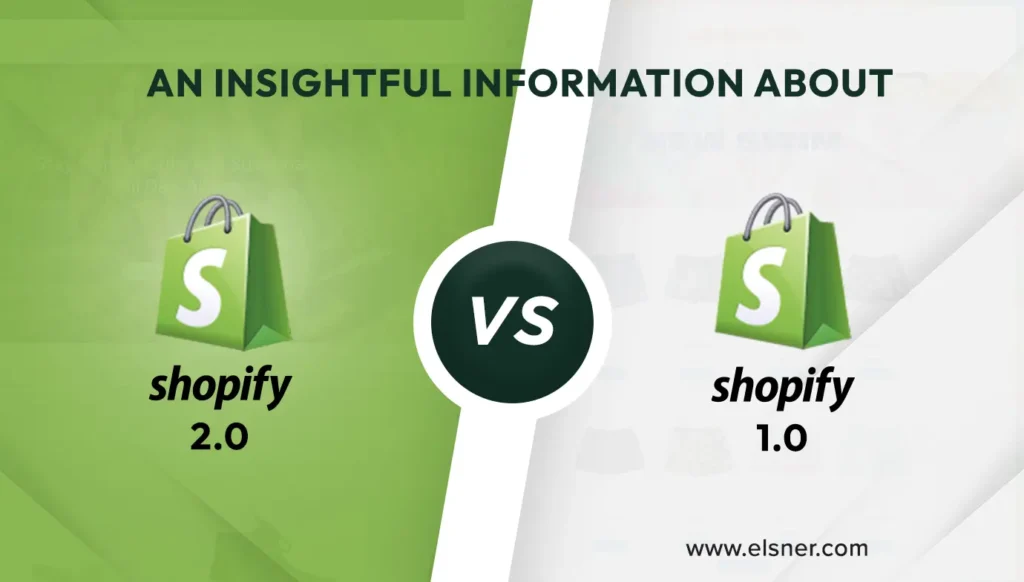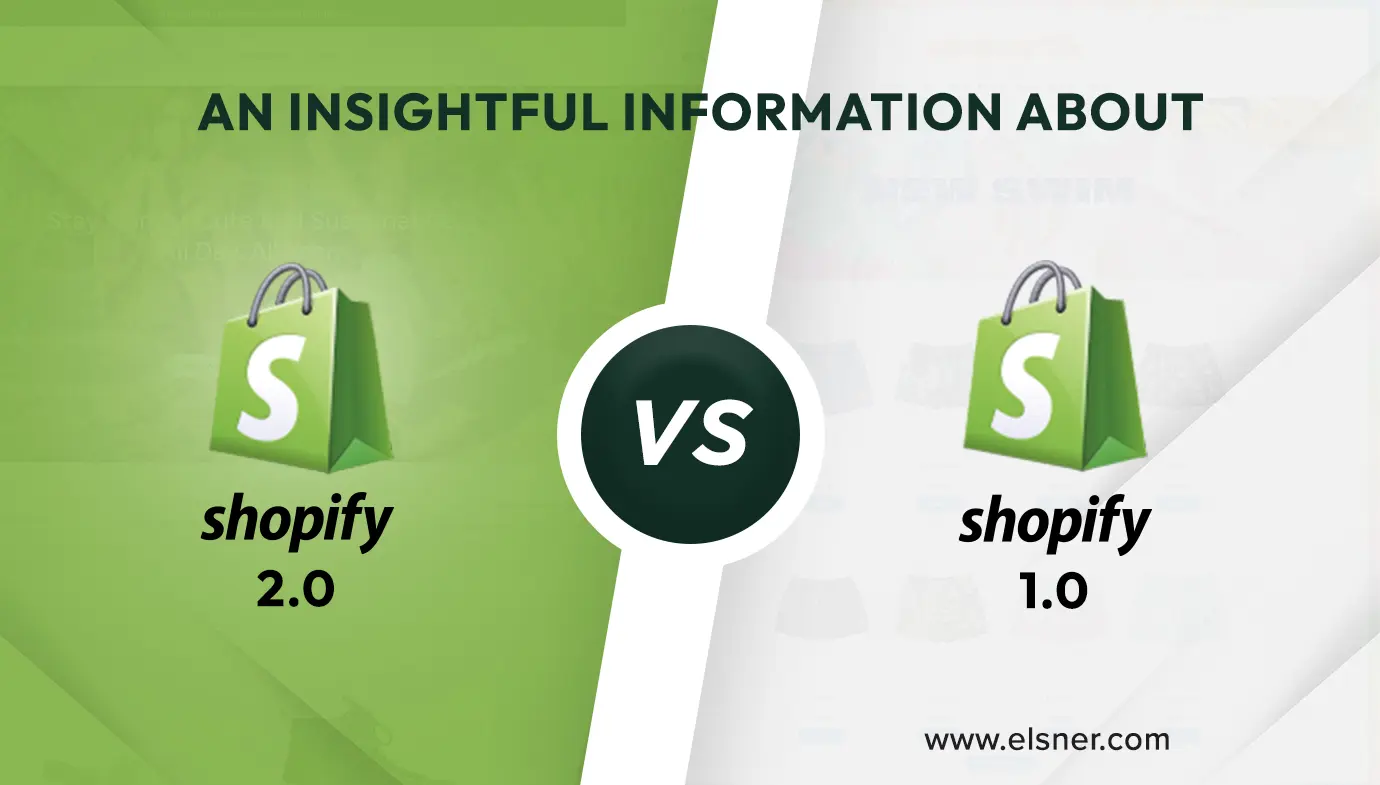Shopify vs. Shopify 2.0
Have you tried to create an e-commerce store online? If so, I am sure you would have known about WordPress. It is the top e-commerce CMS platform used by lots of start-ups around the globe. Get shopify vs shopify 2.0 blog click now!
I hope you knew about the fact that 28 percent of E-commerce websites are built on the WordPress platform. If not, it is indeed. So, have a look at Shopify, which is ranked as the 2nd most popular e-commerce platform after WordPress, with 21% of the world’s E-commerce sites running on Shopify.
So have a look at Shopify, the now-updated version of Shopify 2.0, and its differences.
What exactly is the distinction between Shopify vs Shopify 2.0?
As discussed above, Shopify is second to WordPress on most E-commerce platforms around the globe. The recent update made Shopify the most popular, user-friendly, and reliable one. Now, let’s check out the basic contrast between Shopify and Shopify 2.0 in this blog context in detail. Shopify recently released an update on June 20, 2021, the biggest update, which many refer to as an online 2.0 store. The main purpose of this update is to provide merchants with a fresh and innovative approach to theme architecture.
Those updates to the shopify vs Shopify 2.0 store have had a large impact on customers. Especially merchants who want to have their products on an online E-commerce platform.
Shopify vs. Shopify 2.0
Some of the significant differences between Shopify vs Shopify 2.0 stores
Loading speed and performance aspects
You know that a good site loads quickly without any speed lag. Users don’t have time to wait for even 10 seconds. You may miss potential client sales conversions due to this. The bounce rate of the site has a direct influence on the SEO performance of the webpage. If your site speed is very slow, the bounce rate will increase, and your site will miss potential sales conversions and lose good search result rank.
With the new Shopify 2.0 updates, loading speed has never been an issue for merchants. Most of the premium features are now available within Shopify 2.0 updates. So, with Shopify 2.0, you can be sure that it can handle any number of payments as well as your site traffic without slowing down.
The ‘Dawn’ theme from Shopify is being designated as the latest norm for storefront theme creation, as it is 35% speedier compared to its prior basic theme, ‘Debut’.
Using more complex marketing instruments, including email campaigns, networking connections, and SEO optimisation, These technologies help businesses promote their items and attract more people.

Easy customization facilities:
The Shopify 2.0 theme stores render more facilities than the former version, the first of which is customization. You no longer needed developer assistance to create templates and custom page designs, which were not there in the earlier versions. Well, this allows merchants with less knowledge to create and sell their products on their online stores.
Just for instance. Are you looking to change the font on your webpage? What if you are looking to make a change to your website’s background colour? Well, you can just do that. Do you want to have a shift in sections on your webpage? It’s drag-and-drop.
So that’s how customization has been made simple for non-developers in this new Shopify 2.0 version. Again, a reminder: this saves you from expert tech consultations for smaller stuff.
Marketing tools:
Shopify has numerous marketing tools for your site; you just need to install them on your Shopify store. The only thing you need to do is grab the Shopify marketing app. There are many apps one can enjoy with Shopify store integration.
One needs to have some more technical knowledge to integrate marketing apps on Shopify. But with this new update, you can easily run multiple campaigns as well as omni-channel ads without any need for advanced tech or any developer utility. Using more complex marketing tools, including email advertising, social networking connections, and Search engine optimisation at Shopify 2.o, These technologies help businesses promote their items and attract a wider demographic.
Mobile optimisation aspects of Shopify vs. Shopify 2.0
Many of the clients prefer mobile optimisation and mobile-friendly UI and UX designs for their websites. Do you know why it is? The main reason is that most searches are made through mobile phones and smartphones. Nearly 75 percent of E-commerce searches on Google are run through mobile devices. So, Google takes top priority when it comes to ranking, so a design should be very perfect for mobile devices. So with the peak of mobile commerce gradually approaching, it’s important to choose a site with a highly mobile-friendly, responsive design. Shopify 2.0 has been designed with mobile optimisation in mind, so choosing Shopify 2.0 will render more responsive and mobile-optimised designs for your site.
Shopify 2.0 is designed to allow users to explore and buy things via their cell phones or tablets. The theme customizer relates naturally to smartphone expertise, providing you with a better picture of how customers will interact with your site.
Integration of apps.
Shopify 2.0 has now developed a lot of exciting new features for merchants regarding apps. App integration becomes much easier, and you can extract a lot more data from clients. One of the most exciting features is the enhanced app integration. Enhanced APIs, deeper integrations, and improved app stores
In simple terms, with Shopify 2.0, you can do a lot and have more choice for deeper merchant needs and requirements. Well , which means you can solve the deeper customer issues without any need for any technical or developer team. There are a lot more benefits you can enjoy using Shopify 2.0 app integrations, such as a more detailed app description, more reviews, and more filtered search results.
Overall, Shopify 2.0 is making it less difficult for merchants to identify and install apps that interface with their online business than ever before. There’s bound to be an application in the Shopify application store that will help you add new features to your online shop, optimise the processes of your company, or increase the effectiveness of your advertising.
Now let’s have a look at the difference between Shopify 2.0 and Shopify.
- Language: In Shopify, you use Liquid Code Language. In Shopify 2.0, they use JSON as a template language. Liquid templates have been very popular for several years. But now you can enjoy more precision as you can just edit with text. While the elements of JSON templates are distinct from those of Liquid templates, they are nonetheless template files that enable the subsequent Shopify theme characteristics: Except for gift_card and robots.txt, all design types have theme alternatives.
- The default themes are Dawn for Shopify 2.0 and Debut for Shopify, respectively.
- On Shopify, default sections are limited to the homepage, but in 2.0, they’re open to all pages of the store.
- Here on Shopify’s theme editor, where else on Shopify’s CLI (common line interface)? Unlike theme editing, the CLI allows you to create or build themes and apps with automated technology in an easy manner.
- Shopify (content delivery network) 2.0 is the one that hosts the assets just through the extensions of the Theme app. While in Shopify, you need developer assistance for the asset hosting of the site.
- Theme updates would simply be in Shopify 2.0. You can do an effortless update in hierarchy. While in Shopify, Merchants demand that users navigate through many areas in order to alter the page’s structure.
Difference between Shopify and Shopify 2.0 Table:
The advantages of Shopify 2.0 for merchants—what are they?
As said earlier, Shopify 2.o brings super customization and flexible options for merchants use.
- A good theme architecture.
- Seamless integration.
- Ease and simple meta-field integration aspects.
- A good loading speed means a better user experience, good SEO results, and more conversions.
- An uncomplicated tree view that organises the elements,which means you don’t have to deal with no-meaning codes.
- Simple editing and customization aspects to look at while getting a Shopify theme store
- Better management of apps and checkout processes.
So, I am hoping that you gained some insights about both versions of Shopify.
It’s up to you to go for an updated version or else continue with the liquid-based template coding language.
But from the context, I can tell you that Shopify 2.0 provides more improvised features as compared to its previous version. like good loading speed, better theme customization, easy app integration, Shopify’s own hosting, etc. So, as an e-commerce online store merchant, my suggestion would be to upgrade your store to the latest versions and enjoy the seamless benefits they offer. Happy reading! If you have any queries regarding the blog content, give us your email and we will attend to them and clear your doubts.
